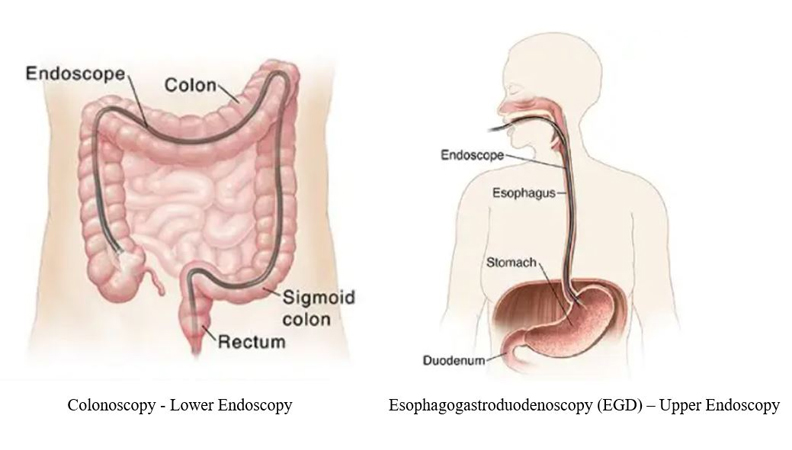Endoscopy and Colonoscopy
- Home
- Endoscopy and Colonoscopy
Organ / Disease Specific Details

Endoscopy and Colonoscopy
Colonoscopy or coloscopy is the endoscopic examination of the large bowel and the distal part of the small bowel with a CCD camera or a fiber optic camera on a flexible tube passed through the anus. It can provide a visual diagnosis (e.g., ulceration, polyps) and grants the opportunity for biopsy or removal of suspected colorectal cancer lesions. Colonoscopy can remove polyps as small as one millimeter or less. Once polyps are removed, they can be studied with the aid of a microscope to determine if they are precancerous or not. It can take up to 15 years for a polyp to turn cancerous.
Upper GI endoscopy is a procedure in which a doctor uses an endoscope—a flexible tube with a camera—to see the lining of your upper GI tract. A gastroenterologist, surgeon, or other trained health care professional performs the procedure, most often while you receive light sedation to help you relax. An upper GI endoscopy can be used to identify disorders or problems such as GERD (gastroesophageal reflux disease) Narrowing (strictures) or blockages. Larger than normal veins in your esophagus (esophageal varices)

